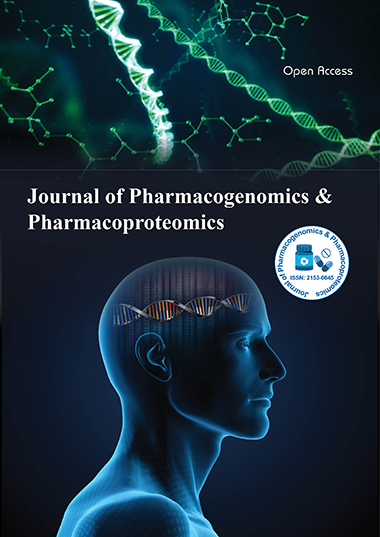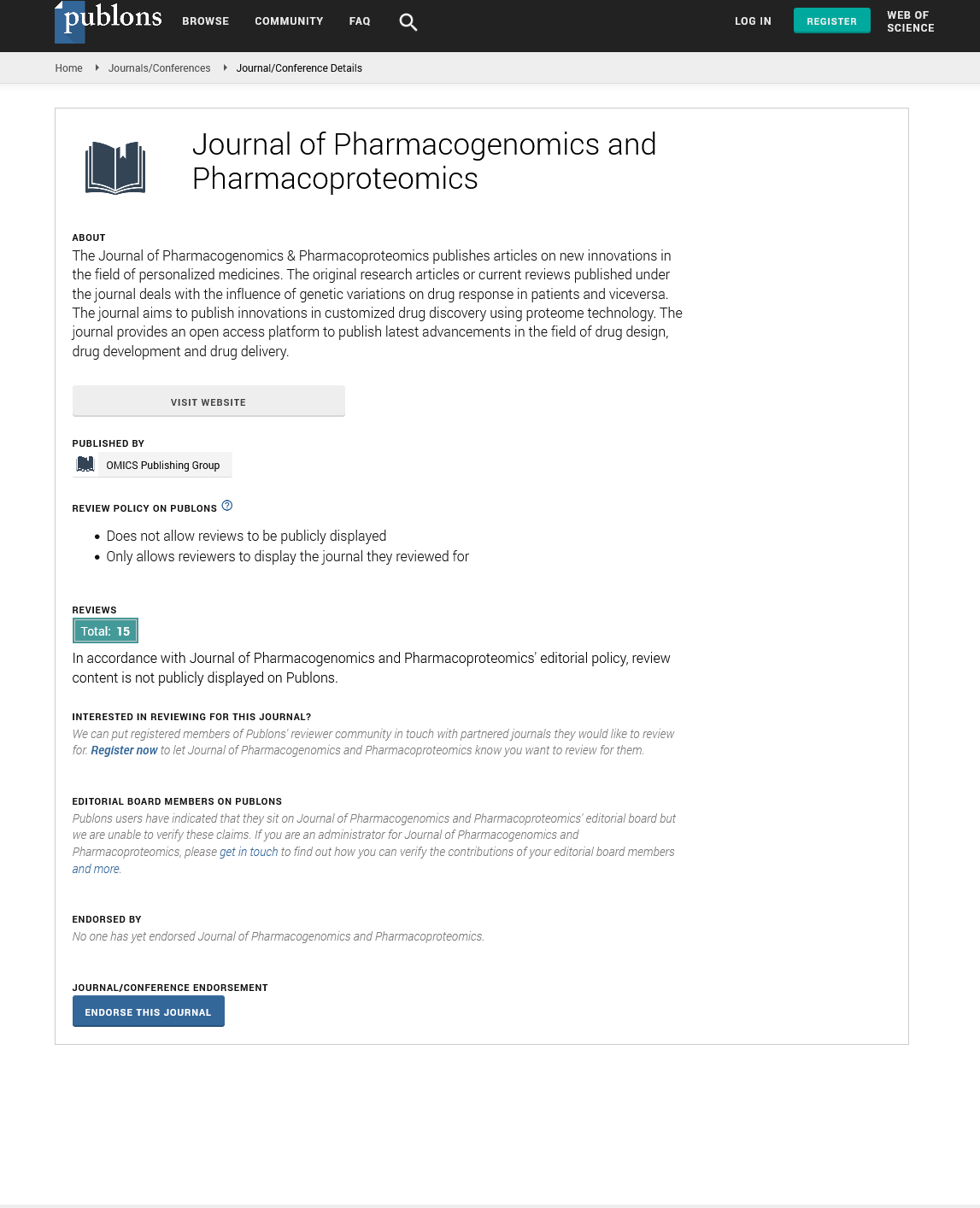Indexed In
- Open J Gate
- Genamics JournalSeek
- Academic Keys
- JournalTOCs
- ResearchBible
- Electronic Journals Library
- RefSeek
- Hamdard University
- EBSCO A-Z
- OCLC- WorldCat
- Proquest Summons
- SWB online catalog
- Virtual Library of Biology (vifabio)
- Publons
- MIAR
- Euro Pub
- Google Scholar
Useful Links
Share This Page
Journal Flyer

Open Access Journals
- Agri and Aquaculture
- Biochemistry
- Bioinformatics & Systems Biology
- Business & Management
- Chemistry
- Clinical Sciences
- Engineering
- Food & Nutrition
- General Science
- Genetics & Molecular Biology
- Immunology & Microbiology
- Medical Sciences
- Neuroscience & Psychology
- Nursing & Health Care
- Pharmaceutical Sciences
Commentary - (2024) Volume 15, Issue 1
Exploring the Impact of Genetic Mutations on Phenotype
Ehringer Ryan*Received: 01-Jan-2024, Manuscript No. JPP-24-24900; Editor assigned: 05-Jan-2024, Pre QC No. JPP-24-24900 (PQ); Reviewed: 19-Jan-2024, QC No. JPP-24-24900; Revised: 26-Jan-2024, Manuscript No. JPP-24-24900 (R); Published: 02-Feb-2024, DOI: 10.35248/2153-0645.23.15.083
Description
Genetic mutations are tiny changes to the genetic code of an organism that can have a wide range of effects, from minor physiological differences to serious health conditions. DNA and RNA play important roles in genetic mutations, as they are responsible for the storage and transmission of genetic information. DNA, or deoxyribonucleic acid, is the main repository for genetic information, similar to a blueprint or instruction manual for an organism's development. It is composed of two strands that form what looks like a spiral ladder this is called a double helix. Each strand is made up of four nucleotides - adenine (A), thymine (T), cytosine (C), and guanine (G). These nucleotides form base pairs - A with T, and C with G which hold the two strands together. During replication, these base pairs are split apart so that each strand can become part of a new double helix.
RNA, or ribonucleic acid, serves as an intermediary between DNA and proteins. It acts as a messenger molecule that carries out instructions encoded in DNA to create proteins. Proteins are large molecules responsible for building structures within cells and performing essential functions such as regulating metabolism or responding to environmental cues. RNA is similar to DNA but differs in two key ways: it contains only one chain instead of two, and its bases consist of A-U-C-G instead of A-T-C-G. During replication, mutations may occur when incorrect bases are paired together during replication or when nucleotides fail to divide correctly into daughter strands. These mistakes can result in changes in the sequences encoded by DNA, which can then lead to changes in protein production or other cellular processes. Thus, mutations caused by mistakes in either DNA or RNA can cause dramatic shifts in an organism's phenotype.
Both DNA and RNA play vital roles in genetic mutations. Mistakes made during replication can lead to changes at the molecular level that can affect an organism’s phenotype. As such, understanding the functioning of both molecules is key to improving our knowledge about genetic mutations and their potential implications on health. Current research into understanding and treating genetic mutations has become contentious issue in the world of medical research. The cause of genetic mutations is mainly attributed to either DNA or RNA changes, making it a complex issue to understand and treat. With current research into this area, scientists are working hard to gain a better insight into what causes these mutations and how they can be treated. One of the main focuses of this research is on discovering new ways to detect genetic mutations, as well as better understanding the effects these changes have on the body. For example, researchers are looking at how different types of DNA or RNA changes can lead to various diseases. They are also exploring how different environmental factors play into genetic mutation development, such as exposure to radiation or chemicals. The advances in technology over recent years have paved the way for more sophisticated methods of detecting and analyzing genetic mutation. This has led to new treatments being explored for certain types of genetic mutations, such as gene therapy and targeted drug delivery systems. While some treatments have seen success in trials, there is still much more research that needs to be done before any large-scale treatments can be implemented. Another major focus of current research is on determining why certain individuals may be prone to developing genetic mutations while others do not. Scientists are studying both environmental factors and genetics for clues about why some people are more likely than others to develop a mutation. Additionally, gene editing technologies are being used in order to identify potential risk factors associated with certain diseases and conditions caused by genetic mutation. Genetic mutation are continuing their work towards gaining a better understanding of genomic disorders caused by genetic mutations so that they can develop new strategies for treatment and prevention.
Citation: Ryan E (2024) Exploring the Impact of Genetic Mutations on Phenotype. J Pharmacogenom Pharmacoproteomics. 15:092.
Copyright: © 2024 Ryan E. This is an open-access article distributed under the terms of the Creative Commons Attribution License, which permits unrestricted use, distribution, and reproduction in any medium, provided the original author and source are credited.

